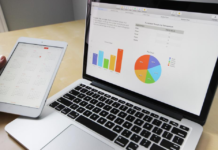To be competitive in business, one needs to take advantage of the plethora of information and data available. This can also mean delving into analyzing company data and gleaning as much information as possible. The role of analytics is key to maximizing business profitability.
The use of analytics can help a business streamline its operations and maximize profitability. Companies of all sizes increasingly use business analytics. Here are some of the many ways that analytics can increase the profitability of a company:
Point out inefficiencies
When one has a complex company, financial operations can be practically impossible by talking to employees or glancing at current sales statistics. Compiling all relevant data and using computer analysis can help companies find precisely where some inefficiencies and problems resonate throughout the firm.
For example, a company may find that the volume of manufacture of a product has slowed down because a machine is not performing well. This information could lead to a cost analysis determining that refurbishing the machine would eliminate the inefficiency and increase profits. Thus the importance of the role of analytics.
Help businesses make the right decisions and avoid losses
Data analysts can use current data to extrapolate information and find trends that can help businesses make good decisions. Using computer analysis models, businesses can ask questions and get a prediction based on real data and expected trends. Models can be manipulated to consider the influence of additional factors, or if a specific factor changes.
A great example of using predictive analytics is deciding if a product is marketable before spending funds on engineering and prototypes. Although engineering costs have decreased thanks to advancements in computer-aided design software, it still takes a significant amount of time and money to get a product to the prototype stage alone.
Predictive analytics can show if the market will likely bear a new product in a specific niche. Using customer data and detailed surveys can help businesses decide what type of products have the best chance of increasing profits, highlighting the role of analytics
Convince managers of where change is needed
It is easy to get into a comfortable rut at a business over time. Change can be difficult for some managers to accept, especially if their business model and choices have resulted in satisfactory margins. However, keeping up with trends can help businesses avoid losing profit due to staying the same with the times.
Customer mindset and generational changes are having a more significant impact on businesses than ever. Younger people are only sometimes interested in the same products and want more convenience than previous generations. Even something as simple as making packaging more straightforward can make a difference in sales.
Consider how canned foods used to require a can opener. Now, many canned foods, especially convenience items like soups and stews, come in a can that can be opened by simply pulling a ring. Condiments that previously did not go in their containers, like squeeze bottles, are now available in them because younger people are busy enough that they want to avoid dealing with using and cleaning a utensil.
Showing managers facts that mean they stand to lose profitability without change can convince them to be open to some changes so they can, at the very least, maintain the market share they desire. Projections based on complex data can convince even the most steadfast company executive when presented concisely and quickly.
Small changes can often lead a company to surpass its financial goals by noting the role of analytics.
Analytics and marketing go hand in hand
A good marketing strategy can make all the difference in the success of a company. Marketing must be based on information that a company knows about their customers, the type of product or service they are providing, and the current economic market.
International sales are common in today’s global marketplace, but that leads to the need for customized marketing materials and campaigns based on the culture and values of the country one is trying to appeal to. This can mean featuring models and visual aids that are appealing to, and respectful of, any major customs or values. Highlighting some products over others is also common based on demand and interest.
Powerful information about customer demographics
As a company grows it is important to stay in touch with the demographics of a typical customer. Over time things can change. If a company wants to capture a wider range of customers, then they need to know as much as possible about them so they can create marketing campaigns that they can truly connect with. This is also useful when considering what types of products to continue making, or seeing the need for additional products and services that could increase profitability.
Forward planning can help businesses stay ahead of their competition
Being the first to produce a product or service, or the company that can deliver it more promptly when demand hits a high, can be a recipe for success. Analytics can help predict market trends and gauge future demand for specific products or services. Businesses can even determine a price range that is most likely to result in success in a future economy. Small changes and considerations can make a big difference. If a company is at the forefront of a trend, then they stand to make more money initially and overall than their competitors that are late to the game.
Elimination of waste and a lower environmental footprint
The use of analytics can help companies identify their highest costs and what the components are that add up to the final cost. For example, what percentage of outgoing cash flow is wages? What components or raw materials cost the most? Having accurate outgoing cost data can help companies look for ways to reduce costs without impacting the quality of their products or services.
A good example may be that it becomes apparent that a raw material makes up a large part of the cost of production. Seeing if another supplier can provide a similar product at a lower cost could make a big difference, or at least reduce any price increases that must be passed on to a customer.
Sometimes analytics can show a company that a product or service is no longer in demand enough to be worth manufacturing. Predicting future demand and profits can allow a company to stop production on a product before it loses the company any more money than it must. This also frees up funds to start manufacturing products that are in demand, or more likely to succeed. Another possibility is that a company is better off sticking to a smaller line of products and concentrating on making them better than having a larger selection. Why spend time on products that are not popular if you have some in high demand or lucrative ideas for revolutionary new products?
Being considerate of the environment and the natural world is viewed in a very positive way by more people than ever before. Analytics can help companies find ways to streamline their processes while reducing environmental impact. In some cases, a company can increase profit significantly by improving its reputation by taking a strong environmental stance, even if it must increase its overall costs of production. Analytics can help companies make smart environmental choices without hurting their bottom line, despite many thinking it is impossible to do so.
Analytics can help businesses reduce downtime
Downtime can have a significant impact on productivity and profits. In some industries equipment failures and other factors can become very problematic. When downtime becomes a recurring issue, it is essential to ask what can be done to prevent it. This, of course, involves delving deep into the exact conditions of each time the failure happens. Data from computer systems can be helpful because it can give information that can be used to pinpoint why equipment is failing.
For example, the case study of chemical plants conducted at McKinsey & Company. Downtime due to equipment failure was starting to be a big problem. Using predictive analytics, companies created a better maintenance system that made a major difference in downtime and replacement of machinery. Rather than more than 10 hours of downtime to replace a pump, operations were significantly streamlined.
Can analytics eliminate unnecessary downtime? The answer is no because no model is perfect, but it can reduce it enough to make a major difference in profit, workplace safety, and overall production quarter over quarter.
Business analysts will continue to be necessary for success
There are a lot of career paths in the world of business. Deciding which path to take is a big decision, but some degrees and fields of study present more opportunities than others. An Online Masters in Business Analytics from St. Bonaventure University is an excellent choice, providing opportunities to work in many industries. Students can complete their degree online while working full-time or juggling other obligations, making it possible to realize career goals on a schedule that meets one’s own needs. In the future, more businesses will use analytics to meet goals and plan their futures. It is an excellent time to enter the world of analytics and learn the skills necessary to take businesses to the top.
St. Bonaventure’s Master of Science in Business Analytics program teaches future business analysts prescriptive and predictive analytics and the best methods for visualizing data so clients can easily understand what is being put in front of them and make the best decisions for their companies.
Improving safety for workers and their communities
Finding likely failures at a manufacturing facility can increase worker safety. If analytics show equipment maintenance issues and failure, then steps can be taken to correct the problem before it causes a serious safety concern or accident.
Accidents lead to downtime and injuries. In some cases, they can lead to damage to the environment and impact the living conditions of everyone in a community. When these tragedies occur, they cost a lot of money and can even lead to the demise of a business, depending on the severity of the incident.
What type of data is used in business analytics?
Many data sources can be used, depending on the company’s goals. It is essential that from the very beginning of any data-driven research, all relevant players agree on the information they want to gain and the goals their company wants to achieve. One should note the role of analytics in maximizing business profitability.
The term data is broad, so it can be helpful for businesses to consider the sources available to them and the necessary time frames that may be involved in getting the information they need.
Surveys
Businesses commonly conduct surveys to gain specific information. These are often conducted via text message or email invitations. Surveys may be sent to targeted demographics, or a business may use a specific survey company that screens participants to get information about a particular group or type of person.
Surveys are a great way to get feedback regarding past purchases and experiences, but they can also help gain opinions on future marketing materials and potential products. Demographic information is helpful because it offers insight into a potential customer group’s income level and lifestyle habits.
Data from customer records and purchases
All companies have records of each purchase. Some demographic and financial data can be gained from these records, and some company models may also gather more personal information.
For example, companies that send out monthly beauty box subscriptions ask for information about subscribers’ appearance and what products they prefer or dislike. These same companies also ask for reviews and feedback on products so they can use this information to tailor their offerings to individuals as much as possible while eliminating or limiting products that are less popular than some.
Economic and government agencies
Taking into account the economic environment and data from government agencies makes a lot of sense. There is a lot of data that has already been collected, is easy to access, and comes from a reliable and accepted source. Highlighting the importance of the role of analytics.
Competitor data and statistics
While inside information may not be as readily available, there is data and information from competitors that is available. Some tax and employee information, for example, is public information. Data analytic companies can try to find out more information than you might realize is legally available.
Industry-wide statistics may also be helpful. Professional organizations sometimes have useful statistics.
Other sources
There may be many other sources of data depending on the situation and the type of questions being asked by a company. Crime statistics are a good example. Non-profit agencies may yield some data. The point is to gather relevant data and find answers to questions that can increase profitability. As long as the data is from a credible source and is relevant, it may be used by analysts.
The future and the role of analytics
The role of analytics will play even more in the future of any business if they wish to remain competitive in a global marketplace. Analytics can be performed relatively cheaply, considering the number of results it can produce. Companies cannot afford to ignore the data that is available to them.
Analytics helps drive innovation and change by reducing time and money spent on ideas, products, and marketing campaigns that are likely to fail. Instead, companies can concentrate on providing customers with what they need and desire in their lives. This leads to a more streamlined and happier society overall. When businesses succeed, the profits help boost economies and provide more opportunities for everyone. Now is a great time to consider a career in business analytics due to the extreme demand for well-trained analysts, as more businesses look for ways to gain market share and stay ahead of their competitors. The role of analytics is key to maximizing business profitability.
















